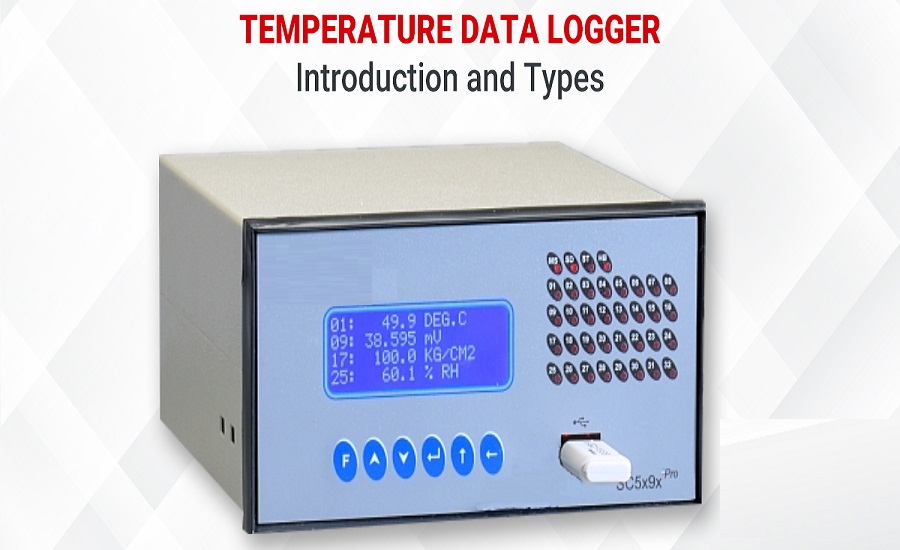Introduction
In today’s technology-driven world, accurate monitoring of environmental conditions is critical for a wide range of industries. From healthcare and food processing to pharmaceuticals and manufacturing, maintaining optimal temperatures ensures product quality, safety, and regulatory compliance. This is where temperature data loggers come into play. These small yet powerful devices provide continuous and precise temperature monitoring, enabling businesses to protect their assets, reduce risks, and improve operational efficiency.
This comprehensive guide will explore how temperature data loggers work, their benefits, key features, and applications across various industries. Whether you’re managing a cold chain, monitoring warehouse conditions, or ensuring the safety of sensitive materials, temperature data loggers are indispensable tools for precision monitoring.
What is a Temperature Data Logger?
A temperature data logger is an electronic device that automatically records temperature data over a set period. Equipped with internal or external sensors, data loggers continuously measure temperature and store the readings digitally. The data can then be transferred to a computer or mobile device for analysis, ensuring you have an accurate record of temperature conditions in your environment.
These devices are designed for various environments, including freezers, refrigerators, warehouses, laboratories, and vehicles. Temperature data loggers are essential for businesses where temperature-sensitive products are stored, shipped, or produced.
Key Features of Temperature Data Loggers
Temperature data loggers have various features that make them highly reliable and suitable for different applications. Here are some key features that set them apart:
1. High Accuracy and Precision:
– Temperature data loggers are designed to provide precise measurements, often within ±0.5°C, ensuring accurate monitoring of environmental conditions.
2. Wide Temperature Range:
– Depending on the model, they can measure temperatures across a wide range, from extreme cold (as low as -80°C) to high heat.
3. Automatic Data Recording:
– Data loggers can be set to record temperature readings at predefined intervals, providing continuous monitoring without manual intervention.
4. Battery Powered:
– These devices are typically battery-operated, monitoring and logging data even during power outages.
5. Data Storage Capacity:
– Modern temperature data loggers come with large memory capacities, storing thousands of data points, which can be downloaded and analyzed later.
6. Alerts and Alarms:
– Many loggers are equipped with alarms that trigger notifications when temperatures exceed predefined thresholds, allowing users to take immediate action to prevent spoilage or damage.
7. Wireless Connectivity:
– Some advanced models offer wireless connectivity, enabling real-time data access via Bluetooth, Wi-Fi, or cloud-based systems, making it easier to monitor temperatures remotely.
8. Compact and Durable:
– These devices are compact and often built to withstand harsh conditions, making them suitable for use in challenging environments such as transportation or manufacturing facilities.
Benefits of Using Temperature Data Loggers
Using temperature data loggers can provide numerous benefits to businesses across various sectors. Here’s how these devices can enhance operations:
1. Improved Product Quality and Safety:
– Maintaining optimal temperature is crucial for preserving the quality of products like food, pharmaceuticals, and chemicals. Temperature data loggers help prevent spoilage by continuously monitoring and alerting when temperatures deviate from acceptable ranges.
2. Regulatory Compliance:
– Many industries are subject to strict regulations that require consistent temperature control. Data loggers offer proof of compliance with standards such as HACCP, FDA, or GxP guidelines by providing documented temperature records.
3. Risk Mitigation:
– Real-time monitoring and alert systems help mitigate risks by allowing businesses to take corrective action before compromising temperature-sensitive products.
4. Cost Savings:
– Preventing temperature fluctuations reduces the risk of product loss, saving businesses significant money. Data loggers also eliminate the need for manual monitoring, saving time and labour costs.
5. Energy Efficiency:
– By providing insights into environmental conditions, temperature data loggers allow businesses to optimize heating and cooling systems, reducing energy consumption and operational costs.
6. Remote Monitoring:
– Wireless temperature data loggers enable businesses to monitor conditions remotely, reducing the need for physical presence at storage facilities or vehicles.
7. Data-Driven Decision Making:
– Continuous temperature data logging provides valuable insights into environmental trends and patterns, enabling businesses to make data-driven decisions about storage conditions, equipment maintenance, and supply chain processes.
How to Use Temperature Data Loggers Effectively
Following best practices for setup, monitoring, and data analysis is essential to get the most out of temperature data loggers. Here are some steps to help you use these devices effectively:
1. Select the Right Logger:
– Choose a temperature data logger that matches your specific requirements. When selecting a device, consider factors like the temperature range, accuracy, data storage capacity, and connectivity options.
2. Set Sampling Intervals:
– Configure the logger to record temperature data at appropriate intervals. Shorter intervals provide more detailed data but can reduce battery life and memory capacity faster, while longer intervals may miss temperature fluctuations.
3. Placement:
– Proper placement of the data logger is critical. Ensure the device is positioned where it can accurately capture temperature readings without interference from external heat sources or airflow.
4. Monitor Alerts:
– Set alarms to notify you when temperatures fall outside the predefined range. Make sure you can respond quickly to these alerts to avoid any potential damage to products or materials.
5. Data Analysis:
– Regularly download and review the logged data. Analyze the temperature trends over time to identify potential issues, optimize storage conditions, and improve efficiency.
6. Calibration and Maintenance:
– Periodically calibrate the data logger to ensure its accuracy. Regular maintenance, such as replacing the batteries or checking sensors, will keep the device functioning correctly.
Applications of Temperature Data Loggers
Temperature data loggers are used in a wide range of industries, each with unique requirements for temperature monitoring. Below are some typical applications:
1. Cold Chain Management:
– In the pharmaceutical and food industries, temperature data loggers are critical for ensuring the integrity of products during transportation and storage. These devices help maintain the required temperature conditions throughout the supply chain, from vaccines to perishable food.
2. Medical and Pharmaceutical Storage:
– Hospitals, laboratories, and pharmacies use temperature data loggers to monitor the storage conditions of sensitive medications, vaccines, and biological samples, ensuring they remain viable.
3. Food Processing and Storage:
– Food manufacturers and distributors use data loggers to monitor storage facilities, freezers, and refrigerators to ensure products remain fresh and safe for consumption.
4. Environmental Monitoring:
– In research and agriculture, temperature data loggers monitor environmental conditions such as soil, water, and air temperatures to optimize growing conditions and improve yields.
5. HVAC and Building Management:
– Facilities management teams use temperature data loggers to monitor HVAC systems and ensure comfortable indoor environments while optimizing energy use.
Conclusion
Temperature data loggers have become indispensable tools for precision monitoring across various industries. Whether you’re managing a cold chain, ensuring regulatory compliance, or optimizing energy efficiency, these devices provide the continuous, accurate data needed to maintain optimal temperature conditions.
By investing in the correct temperature data logger, following best practices, and leveraging real-time data, businesses can enhance product quality, reduce risks, and improve operational efficiency. Embrace the power of temperature data loggers today to safeguard your assets and stay ahead in your industry.


